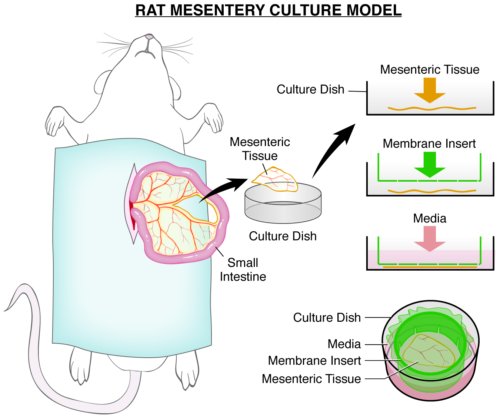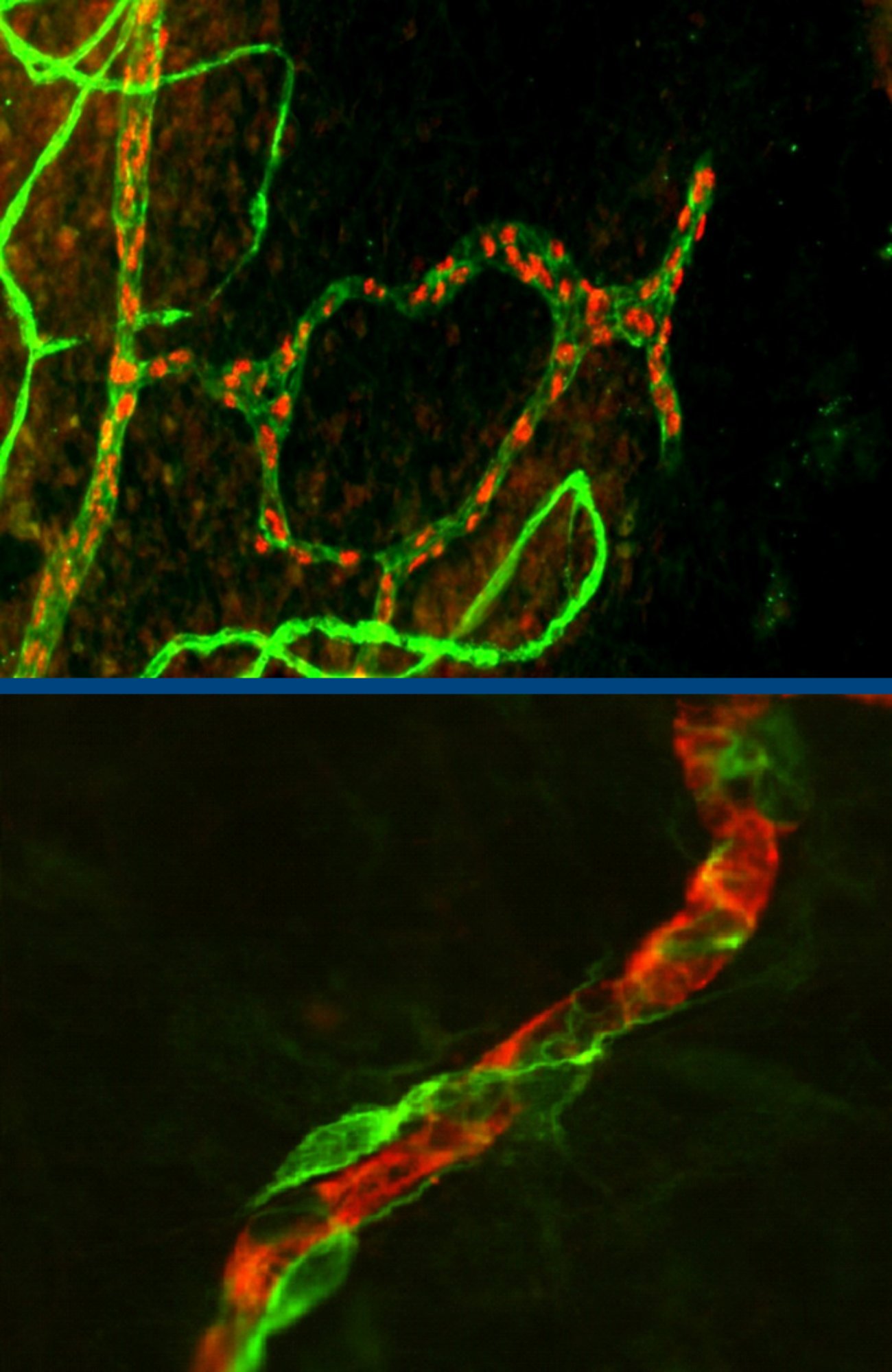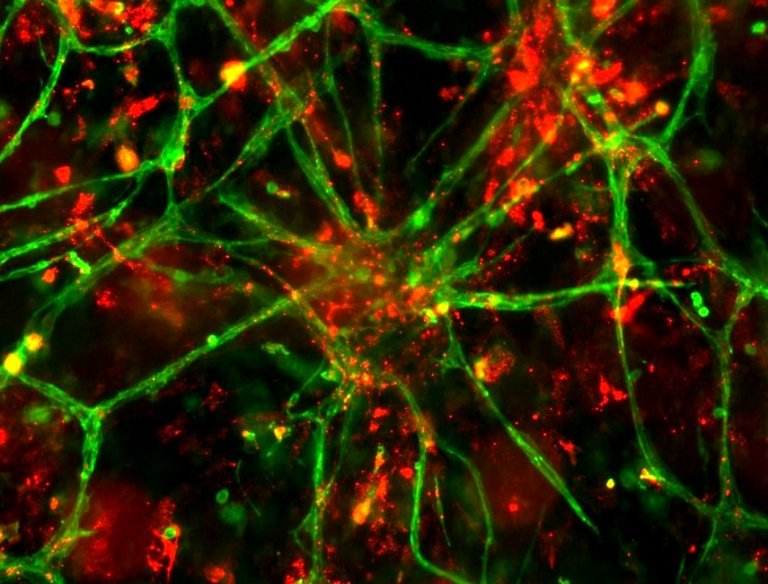Research Overview
Our passion is making scientific discoveries and developing new bioengineering approaches for connecting tissue level function to integrated cellular dynamics. We want to understand how we can make the smallest blood vessels in our body. Because of this the microcirculation is a common denominator for most pathological conditions spanning from cancer to myocardial infarction. At the intersection of tissue engineering, biomechanics and physiology, we focus on identifying the cell dynamics involved in how microvascular networks grow and what goes wrong during disease states. Current research projects fall into three categories: Biomimetic Model Development, Basic Science Discovery, and Cell Therapy Testing.
Biomimetic Model Development

Tissue engineered models have emerged as tools to elucidate the mechanisms involved during angiogenesis, defined as the growth of the smallest blood vessels in our body. A challenge with model development, is the incorporation of physiological complexity that recapitulates in vivo. Consider a real tissue environment with vascular cells, immune cells, nerves, blood vessels, lymphatic vessels, extracellular matrix proteins and more. How can we incorporate all these players? To meet this challenge, we have developed an innovative ex vivo tissue culture model that enables simultaneous real-time investigation of angiogenesis and lymphangiogenesis.
Basic Science Discovery

Most laboratories focus on either angiogenesis or lymphangiogenesis. Our laboratory believes that by investigating both processes at the same time we can motivate and answer new questions. We focus on two areas and their relation to aging and age related diseases: vascular pericyte dynamics and lymphatic/blood vessel plasticity. For the first area, we know that pericytes and endothelial cells are critical for angiogenesis. However, critical questions remain. Are there specialized sub-types of pericytes? Where do perciytes come from? How do pericytes interact with endothelial cells? The second area is focused on discovering the relationships between blood and lymphatic vessels. Given the importance of the coordination between the lymphatic and blood vascular system in inflammation, wound repair, tumor metastasis, lymphedema, and other pathological conditions, understanding their interactions is critical. For example, can lymphatic vessels turn into blood vessels? The discovery based studies in our laboratory take advantage of our novel tissue culture model and utilize chronic animal studies, intravital microscopy and computational modeling. The integrated approaches serve to push microvascular research in new directions.
Cell Therapy Testing

Another application of our novel tissue culture model is cell therapy testing. For example, a challenge in cancer research is the lack of a physiologically responsive in vitro model that allows for investigation of cancer cells in a tissue environment. A model that enables real-time investigation of cancer cell migration, fate, and function during microvascular network growth does not exist. Our new model platform enables screening of molecular treatments on cancer cell migration in real microvascular networks with blood vessels, lymphatic vessels, fibroblasts, macrophages, and extracellular matrix.
© 2019 by Walter L. Murfee
